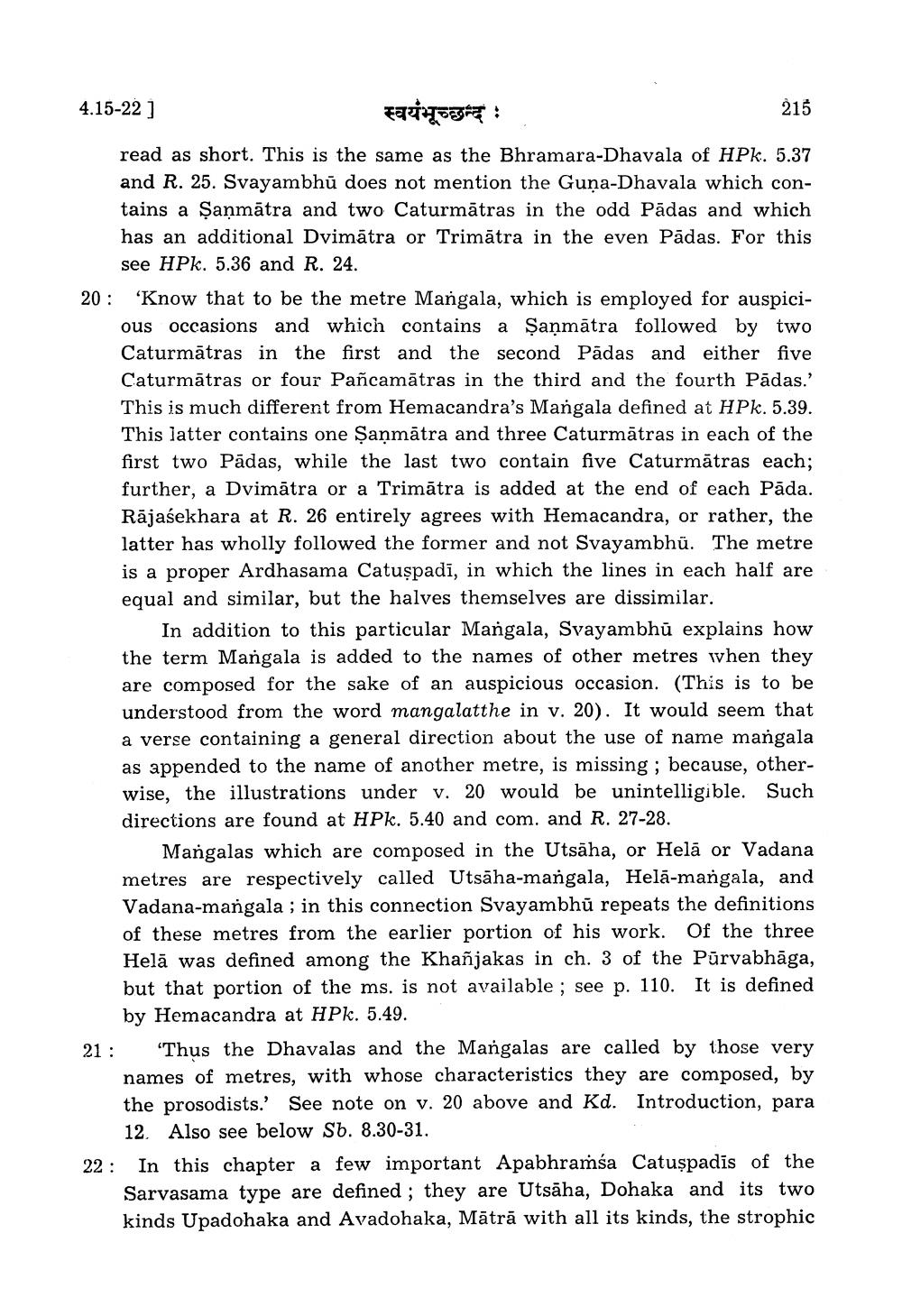________________
4.15-22 ) स्वयंभूच्छन्द:
215 read as short. This is the same as the Bhramara-Dhavala of HPk. 5.37 and R. 25. Svayambhū does not mention the Guņa-Dhavala which contains a Şaņmātra and two Caturmātras in the odd Pādas and which has an additional Dvimātra or Trimātra in the even Pādas. For this
see HPk. 5.36 and R. 24. 20: “Know that to be the metre Mangala, which is employed for auspici
ous occasions and which contains a Şaņmātra followed by two Caturmātras in the first and the second Pädas and either five Caturmātras or four Pañcamātras in the third and the fourth Pādas.' This is much different from Hemacandra's Mangala defined at HPk. 5.39. This latter contains one Şaņmātra and three Caturmātras in each of the first two Pādas, while the last two contain five Caturmātras each; further, a Dvimātra or a Trimātra is added at the end of each Päda. Rājasekhara at R. 26 entirely agrees with Hemacandra, or rather, the latter has wholly followed the former and not Svayambhū. The metre is a proper Ardhasama Catuşpadī, in which the lines in each half are equal and similar, but the halves themselves are dissimilar.
In addition to this particular Mangala, Svayambhū explains how the term Mangala is added to the names of other metres when they are composed for the sake of an auspicious occasion. (This is to be understood from the word mangalatthe in v. 20). It would seem that a verse containing a general direction about the use of name mangala as appended to the name of another metre, is missing ; because, otherwise, the illustrations under v. 20 would be unintelligible. Such directions are found at HPk. 5.40 and com. and R. 27-28.
Mangalas which are composed in the Utsäha, or Helā or Vadana metres are respectively called Utsāha-mangala, Helā-mangala, and Vadana-mangala ; in this connection Svayambhū repeats the definitions of these metres from the earlier portion of his work. Of the three Helā was defined among the Khañjakas in ch. 3 of the Pūrvabhāga, but that portion of the ms. is not available ; see p. 110. It is defined
by Hemacandra at HPk. 5.49. 21: "Thus the Dhavalas and the Mangalas are called by those very
names of metres, with whose characteristics they are composed, by the prosodists.' See note on v. 20 above and Kd. Introduction, para
12. Also see below Sb. 8.30-31. 22: In this chapter a few important Apabhramsa Catuspadis of the
Sarvasama type are defined ; they are Utsāha, Dohaka and its two kinds Upadohaka and Avadohaka, Mātrā with all its kinds, the strophic




